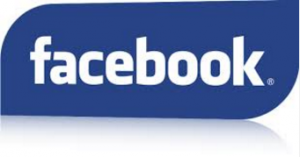 By Gary Smith
By Gary Smith
Should traders ‘like’ Facebook in 2016?
 With uBinary running a promotional offer on Facebook’s stock price, traders currently have the ideal opportunity to take a position on one of the giants of the tech world. So does a user base of more than 1.5 billion people and bumper profits last year mean that 2016 is going to be yet another golden year for Facebook? Are there any threats on the horizon? Here, we look at how Facebook has managed to turn ‘likes’ into a long term commercial success and consider whether the trend is likely to continue.
With uBinary running a promotional offer on Facebook’s stock price, traders currently have the ideal opportunity to take a position on one of the giants of the tech world. So does a user base of more than 1.5 billion people and bumper profits last year mean that 2016 is going to be yet another golden year for Facebook? Are there any threats on the horizon? Here, we look at how Facebook has managed to turn ‘likes’ into a long term commercial success and consider whether the trend is likely to continue.
See an up-to-the-minute facebook quote at Markets.com
Facebook quotes post-flotation progress
When the company’s shares debuted at $38 each on the Nasdaq in May 2012, Facebook became the most valuable company ever to go public. Its initial $12.8bn selloff meant that at the time, the company had an implied worth of $104bn and such was the level of public interest that the team of underwriters tasked with managing the flotation had closed their order books two days in advance of the sale.
Facebook may have captured the imagination of large numbers of investors, but there were still jitters surrounding the company. Was it overvalued? Were the various models of paid advertising on the platform capable of translating into a strong revenue stream over the long term? The selloff occurred on a Friday and by the following Monday, these jitters had translated into an immediate leak of support to the tune of 11%.
For the first year of trading, these negative sentiments persisted and the Facebook stock price was hovering around the $24-mark at the anniversary of its flotation. But then in mid 2013, the upward trajectory began – and has continued to the present. The most recent peak occurred at the end of January when the company’s 2015 fourth quarter earnings figures were announced. Revenue was up nearly 53% on the same period for the year previously and year-on-year revenue was $17.93bn, marking a 44% increase. The announcement triggered a 15.5% increase in the share price – and a peak price of $112.21.
Following this, Reuters reported that the average 2016 stock price target among the analysts it was tracking was $138, with the most bullish target pitched at $170.
Why has the Facebook share price had such a good run?
One way of understanding this is to compare the performance of Facebook to two considerably less successful tech-based flotations over recent years: Groupon and Twitter. Groupon went public shortly before Facebook amid similarly high expectations, and just like Facebook, the online coupon specialist saw an immediate leak of support from its opening price of around $28. Yet for Groupon, the downward trend has persisted and its price is currently languishing in the region of $4.70. The reason for this is twofold: as an analyst in Fortune recently put it, the company was overpriced to begin with and not enough new consumers are interested in the coupon marketplace.
Twitter saw initial steep growth following its public selloff in late 2013, reaching a peak of $69 in January 2014. Yet over the last year, a combination of falling user numbers and weak advertising revenue has led to the company hitting an all-time stock price low of $15.72 in February of this year.
By contrast, Facebook has witnessed solid growth thanks to a steady increase in users coupled with (so far at least) effective ways of monetising its popularity. Here’s what is driving that growth…
- Reach. The story so far has been one of rapid and then steady growth. In 2012, the number of Facebook account holders surpassed 1 billion for the first time. As of December 2015, the company reports 1.59 billion monthly users and 1.04 billion daily active users. For marketers, Facebook is almost impossible to ignore.
- Targeted ads. Facebook has monetised its platform effectively by mining the demographic and usage data of its user base, offering businesses the potential of accurate ad targeting based on multiple metrics. In other words, Facebook ads work; they offer value for money and advertisers are willing to pay for them.
- Mobile. As mobile has become the dominant platform for Facebook users, the company itself has moved seamlessly to respond to this. 76% of ad spend is now on mobile ads.
Will the good times continue? Points to look out for in 2016
As we have seen, analysts are overwhelmingly positive with their 2016 targets for Facebook. In terms of specific bullish drivers, look out for the following…
- Instagram ad-targeting. The challenge for any giant is to find and exploit new revenue streams in order to keep profits and stock valuations healthy. For this, pay special attention to any developments linked to Facebook’s stablemate, Instagram. The image-based platform has seen brisk growth in user numbers – especially among ‘Generation Z’ users. If advertisers like it, then so too should investors.
- Higher advertising revenue. Late last year, Facebook hiked its advertising pricing by 21% – yet despite this, it placed 29% more ads. This is a clear indicator of a continued strong demand, which could very well translate into prediction-beating growth when future quarterly earnings figures are announced.
On the negative side, Facebook is faced with the following potential impediments to a rising stock price…
- Ad-blocking growth. Without advertising revenue, Facebook quite simply would not have a profitable business model. Ad-blocking technology, (especially on mobile) therefore represents a real threat and traders should look out for evidence of this taking hold.
- User growth reaches a peak. Mathematically, (in developed markets, at least) the user base is fast approaching a point where there is nowhere left to go. Facebook is working on emerging markets but the ad-generating potentials of such markets is untested. Stalling (and falling) growth has been a big driver of investor nervousness about Twitter. Evidence of a stall in user numbers could trigger a loss of support among Facebook investors too.
- New social platforms. Facebook tried to buy Snapchat but failed. In less than a year, the social video platform has grown from 2 billion to 7 billion video views per day. So far, it has failed to monetize this effectively. Evidence that this is changing could cause Facebook to leak support.
Looking to put your market knowledge of tech to the test? Head to our trading platform reviews to find the right one for you.
 By Gary Smith
By Gary Smith